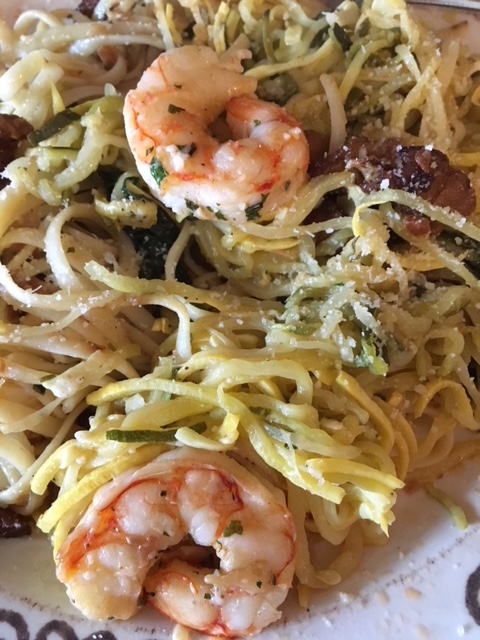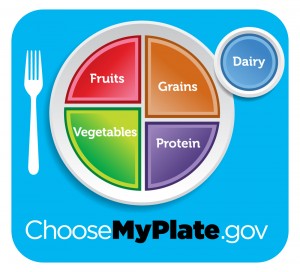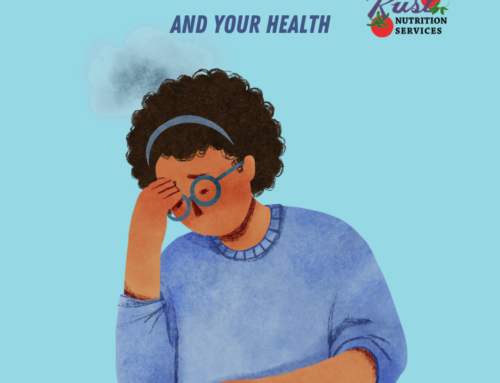You hear a lot in the news about “eating clean”, going “plant-based”, and avoiding “chemicals” in your diet. Well, here’s the thing, food IS chemistry. We eat chemicals. We are made of chemicals. They aren’t all scary.

The ingredients here may seem scary, but they aren’t. This label is the nutrition facts for a popular healthy nut bar.
Nutrition Facts
Instead of focusing on tiny details, and reading food labels with a paranoid obsession, step back and look at your diet and lifestyle from a different perspective. There is no magic in eating certain foods, brands, or supplements. There is value in balancing your diet, so that you get a little bit of everything through the week, and then benefit from a variety of nutrients. And hey, food should taste good!
Nutrition science is not an exact science, and the truth is, really good, well-controlled human studies are limited because humans are difficult to keep captive. There is also the problem of controlling nutrients. No two tomatoes are exactly the same every time. The nutrient values assigned to foods are good estimates, because we can’t always control for every variable. Foods can vary a little from harvest to harvest (think of how wine is different every year with every harvest depending on sun, water, etc).
This doesn’t mean that we should ignore the Nutrition Facts. These values are based in science, and are good estimates. They just aren’t exact, and your daily eating doesn’t have to be exact either. Overall, you should limit your saturated fat intake. Include some good fats every day like olive oil, avocado, fatty fish, nuts, and seeds. The best advice – eat a wide variety of fruits and vegetables that you enjoy every week, include more whole grains (fiber), eat smaller portions of meats, cheeses, and packaged food, and exercise regularly. And don’t judge a food just by an ingredient that you may not be familiar with.
Do I have to go Vegetarian?
Short answer, no. “Plant-based” and vegetarian diets are currently trending, but you don’t have to go vegetarian to eat a heart-healthy diet. A vegetarian diet is not always better (but of course, if you choose a vegetarian diet, that’s fine. Be sure to consult with a registered dietitian to be sure it’s adequate). You can however add certain foods to your grocery cart this month to make some simple changes that can impact your overall heart health.
For heart health specifically, there are definitely plant foods that research show are important. We can’t control our destiny, but we can control how we live our lives.
Do Add Soluble Fiber to Your Diet
Soluble fiber can help lower blood cholesterol, keep your gut healthy, and keep you full longer. You can easily add soluble fiber by eating more vegetables, canned beans, apples, blueberries, oats, barley, and nuts to your diet.
- Cook barley as a side dish, or add it to a vegetable salad.
- While overnight oats and steel cut oats may sound “better”, old fashioned oats are great too, especially if you are short on time. Have quick oats for breakfast (don’t add too much sugar, try slicing a banana or adding blueberries and walnuts to your oatmeal).
- Use beans differently. Don’t like kidney beans? Add pinto beans or black beans to your chili. Add black beans to prepared salsa to give it a big vitamin and fiber boost. Make your own bean dip with cannelloni beans – just add a can of drained beans, a garlic clove, some seasoning to a food processor and blend.
- When time is short, pick up some prepped veggies such as bagged green beans or snow peas for a quick side dish. Make use of frozen vegetables too. Keep a bag in the freezer to add to soups or stews or for an easy side dish.
- Love pasta? No problem. Pasta is a great base for lots of healthy add-ins. Consider vegetable “noodles” with pasta. Begin boiling linguine in water. Add vegetable noodles (sometimes called “zoodles”) during the last 2-3 minutes. Top with your favorite tomato sauce or an olive oil dressing.

Half Zoodles, Half Linguine, plus a handful of spinach.
- Apples are a great source of soluble fiber. Of course apples make a great snack, but you can also add sliced or chopped apples to salads, serve thin apple slices with a cheese tray, and use them in cooking. Top a 4 ounce pork loin chop with thinly sliced apples in baking dish, pour 1/2 cup of apple cider or low sodium broth over pork, bake for 25 minutes.
Down and Dirty for Heart Month: You Don’t Have to Eat Clean or Extreme
The notion of “clean eating” prevails in the popular press, but it has nothing to do with diet quality. There’s nothing magic about a food that “has only 4 simple ingredients” nor is there anything evil about a food with “ingredients you can’t pronounce”. Often food additives and preservatives are a good thing. Here is a good read on that topic.
Here are some great ways to improve your diet quality:
- Use the MyPlate visual. It’s a simple lesson in balance. Fill half of your plate with salad or some other veggie for lunch and dinner as often as possible.

- Eat what you like. By this statement I don’t mean “eat anything”, I mean don’t obsess over all of the packaged foods you buy. Yes, buy less packaged food, but enjoy the ones you eat. Rather than comb over ingredient lists on bread or cereal boxes, choosing the one that is “clean”, that you hate, choose the ones you actually enjoy. If you don’t enjoy the taste of something, you aren’t going to stick with it. You are better off choosing a cereal you enjoy, even if it has a bit of added sugar (<11 grams is okay) or has some additives. A serving of quick oats that you are willing to prepare and eat is way better than any organic steel cut oats that sits in the back of your cupboard.
- You can include “red meat” in the diet, in addition to poultry and fish. Beef is an excellent source of iron, and iron is essential to carry oxygen and carbon dioxide within the red blood cell from one body tissue to another. Iron is also necessary for the production of energy and immune system support. As far as fat goes, a 3-ounce serving of beef sirloin has only 8 grams of fat (2 saturated), about the same as a skinless chicken thigh. And, Today’s pork has been bred to be leaner, and a 3 ounce portion of pork tenderloin has only 3 grams of fat, and only 1 gram of saturated fat (just as low in fat as skinless chicken breast).
- Get Omega-3 fatty acids into your diet. The research is strong that these fatty acids are good for our hearts, brains, and maybe even our mood. Balance out the red meat by choosing fish, twice a week when possible (this includes canned or packed tuna, sardines, or salmon). Add walnuts to your diet (chop them into oats, top your yogurt parfait with them, add them to salads or stir fries).
- Create a delicious meatless dinner once a week. It doesn’t have to be on Mondays, and it doesn’t have to include tofu. Cooking Light has some great ideas. Your goal here is to include lots of vegetables, beans, and grains. These homemade veggie sliders include beans, quinoa, pistachios, and dried cranberries.
Finally, be sure to stay as active as you can. Check with your doctor about any physical limitations, and get moving. Walking, jogging, resistance exercise, tennis, Zumba. Just like choosing the healthy foods you enjoy helps you sustain a good diet, choosing an activity you enjoy will help you stick with it too.




